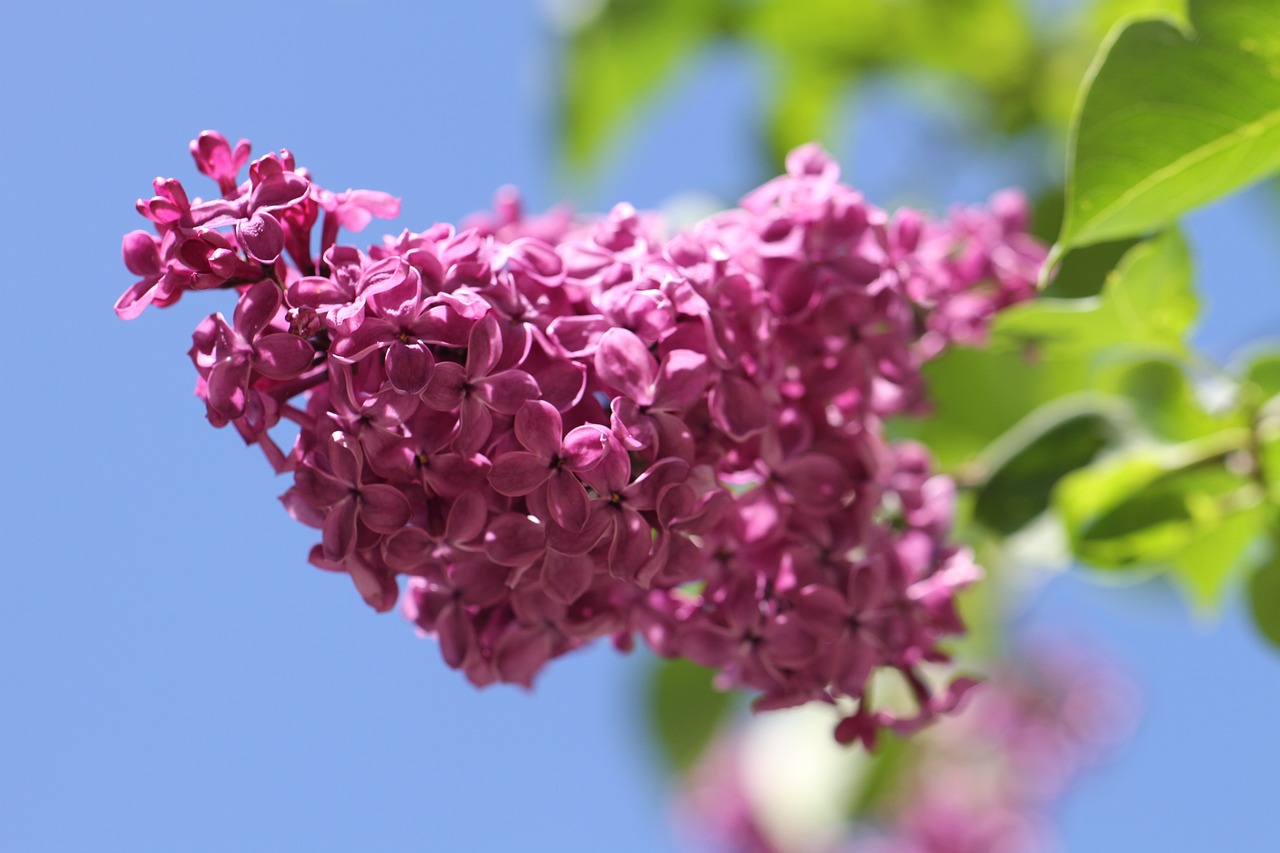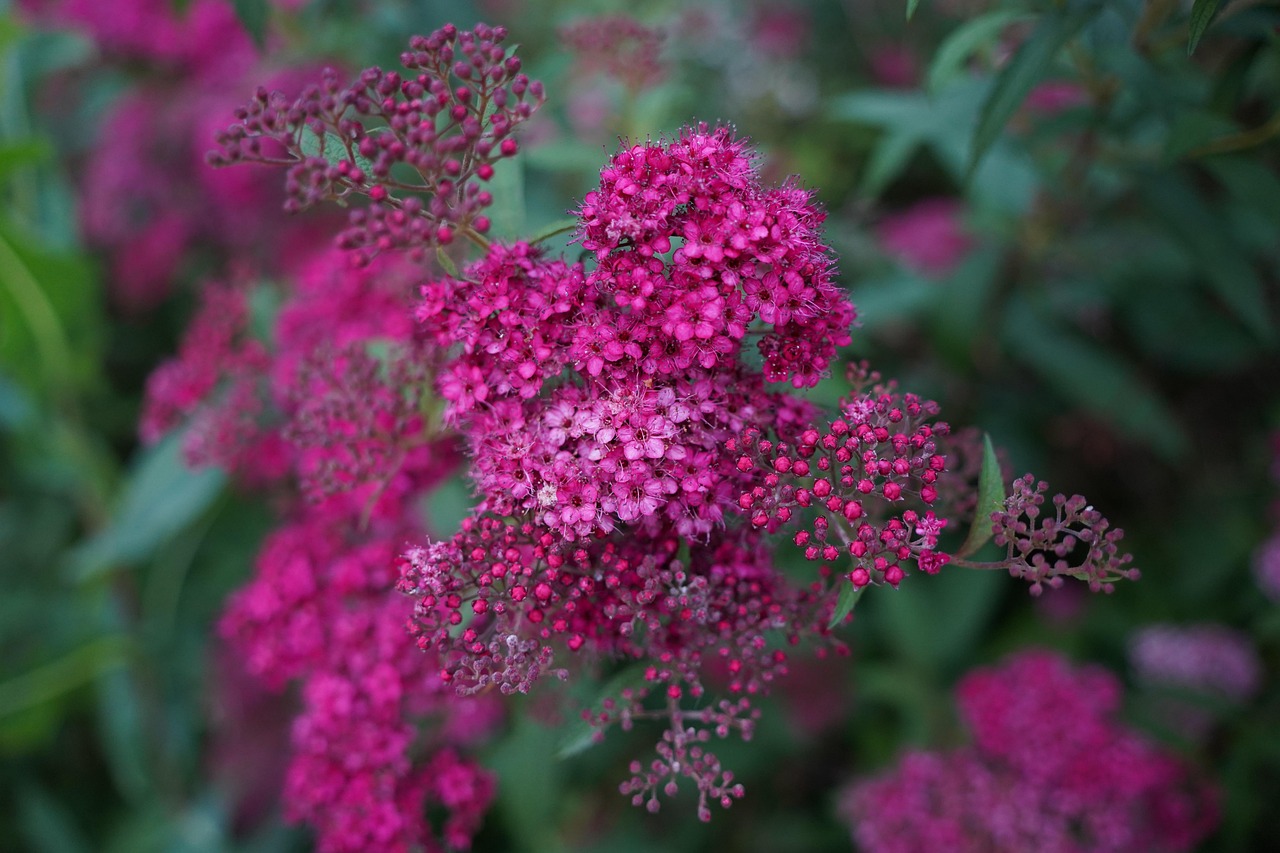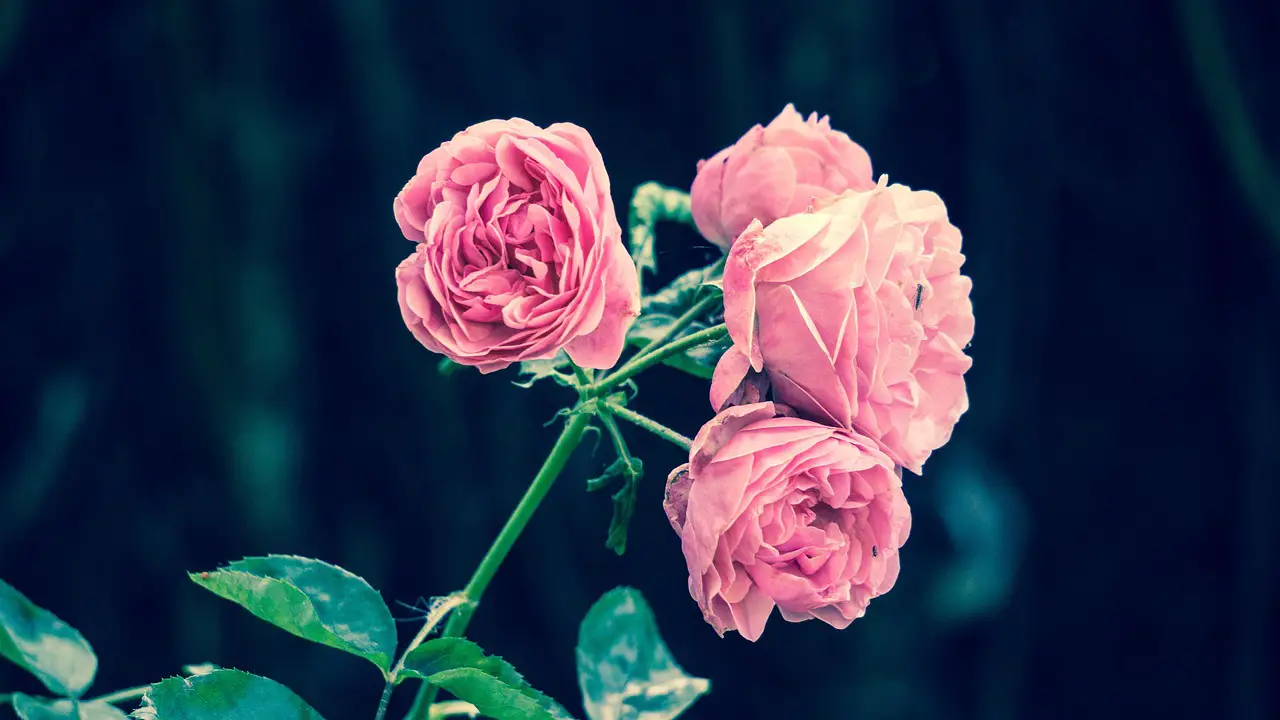Pink flowering shrubs are an enchanting addition to any garden. Their vibrant blooms add a touch of elegance and charm, creating a stunning visual impact. With an array of species available, these shrubs can enhance your landscape throughout the blooming season. Whether you prefer soft pastel shades or bold fuchsia, there is a pink flowering shrub to suit your taste.
Incorporating pink flowering shrubs into your garden not only elevates its aesthetic appeal but also supports local wildlife. Many of these plants attract pollinators such as bees and butterflies, promoting biodiversity in your outdoor space. Furthermore, their varying heights and growth habits provide structure and depth to garden design, making them versatile choices for both small and large areas.

Before selecting pink flowering shrubs for your garden, it is essential to consider the growing conditions in your area. Factors such as climate, soil type, and sunlight will influence which species thrive in your garden. Additionally, understanding the specific characteristics of each shrub can help you choose the right one for your landscaping needs.
Popular Pink Flowering Shrubs
There are numerous pink flowering shrubs that can brighten up your garden. Here are some popular options:
- Azalea: Known for their stunning blooms, azaleas produce flowers in various shades of pink. They thrive in partially shaded areas and prefer acidic soil.
- Rhododendron: Similar to azaleas, rhododendrons offer spectacular pink flowers. They grow best in well-drained, acidic soil in shady environments.
- Weigela: This shrub features trumpet-shaped flowers that attract hummingbirds. Weigela can tolerate a range of soil types and prefers full sun to partial shade.
- Hydrangea: Some varieties of hydrangeas produce lovely pink blooms. They flourish in moist, well-drained soil and can adapt to different light conditions.
- Flowering Quince: This hardy shrub produces bright pink flowers in early spring. It is drought-tolerant and thrives in well-drained soil.
Choosing the right shrub also depends on the desired height and spread. Here is a quick overview of the average heights of some popular pink flowering shrubs:
| Shrub Name | Average Height (feet) | Average Spread (feet) |
|---|---|---|
| Azalea | 3-6 | 3-5 |
| Rhododendron | 4-10 | 4-8 |
| Weigela | 3-6 | 3-5 |
| Hydrangea | 3-12 | 3-10 |
| Flowering Quince | 3-10 | 3-6 |
When planning your garden, consider how these pink flowering shrubs can complement each other. Grouping plants with similar water and sunlight needs can simplify maintenance. Additionally, mixing different heights can create visual interest and enhance overall design.
The beauty of pink flowering shrubs lies not only in their blooms but also in their foliage. Many species offer attractive leaves that change color throughout the seasons, providing year-round interest. By carefully selecting a combination of shrubs, you can ensure your garden remains vibrant and appealing regardless of the time of year.
As you explore the delightful world of pink flowering shrubs, remember to think about the specific environments they need to thrive. This will ensure that you create a flourishing garden that brings joy for years to come.
Choosing the Right Location
Selecting the ideal location for your pink flowering shrubs is crucial for their health and vitality. Different species have varying sunlight and moisture requirements. Assessing your garden’s environment will help ensure that these beautiful plants thrive.
Sunlight Requirements
Most pink flowering shrubs prefer full sun to partial shade. However, specific needs can vary. Here are some general guidelines:
- Full Sun (6+ hours of sunlight): Azaleas and Weigela thrive in full sun, promoting abundant blooming.
- Partial Shade (3-6 hours of sunlight): Rhododendrons and Hydrangeas often do better with some afternoon shade to protect them from intense heat.
- Shady Areas (Less than 3 hours of sunlight): While less common, some varieties of flowering shrubs can tolerate shade, but blooming may be reduced.
When determining the best spot, observe how the sunlight moves across your garden throughout the day. This understanding will guide you in placing your shrubs for optimal growth.
Soil Considerations
The type of soil in your garden plays a significant role in the health of your pink flowering shrubs. Different species have preferences for soil acidity and drainage. Here are some important factors to consider:
- Soil Type: Most pink flowering shrubs prefer well-drained soil. Heavy clay soils can retain too much moisture, leading to root rot.
- Soil pH: Azaleas and Rhododendrons thrive in acidic soil (pH 5.0-6.0), while others like Weigela can tolerate a broader pH range.
- Organic Matter: Adding compost can improve soil structure and fertility, benefiting your shrubs significantly.
Before planting, consider conducting a soil test to determine pH levels and nutrient content. This information will guide you in making necessary amendments for optimal growth.
Caring for Pink Flowering Shrubs

Once you have selected and planted your pink flowering shrubs, proper care is essential for their health and appearance. Regular maintenance can enhance their growth and extend their blooming period.
Watering Needs
Watering is crucial during the establishment phase of your shrubs. Here are some watering tips:
- Newly Planted Shrubs: Water deeply once or twice a week, depending on rainfall, for the first growing season.
- Established Shrubs: Once established, most pink flowering shrubs are relatively drought-tolerant. However, they benefit from regular watering during dry spells.
- Signs of Stress: Wilting leaves or drooping stems may indicate that your shrub needs more water.
Pruning Techniques
Pruning is another vital aspect of care that promotes healthy growth and flowering. The timing and method of pruning can vary depending on the species:
- Spring Bloomers: Prune after flowering to avoid removing next year’s buds. This includes shrubs like Azaleas and Rhododendrons.
- Summer Bloomers: Weigela and Hydrangea typically benefit from pruning in late winter or early spring before new growth begins.
- General Maintenance: Remove dead or damaged branches at any time to encourage healthy growth and improve air circulation.
By following these care guidelines, you can ensure that your pink flowering shrubs remain healthy and vibrant, creating a stunning landscape in your garden for years to come.

Design Ideas for Pink Flowering Shrubs

Incorporating pink flowering shrubs into your landscape design can create stunning visual effects. Their vibrant colors and diverse forms offer numerous possibilities for enhancing your garden’s aesthetic appeal. Here are some design ideas to consider when using these beautiful shrubs.
Creating Color Combinations
One of the most exciting aspects of using pink flowering shrubs is the opportunity to create beautiful color combinations. Pairing pink with complementary or contrasting colors can result in a vibrant landscape. Here are some ideas:
- Pink and White: Combine pink flowering shrubs with white blooms, such as white Hydrangeas or Viburnums, to create a classic and elegant look.
- Pink and Blue: Pairing pink shrubs like Weigela with blue-flowering plants, such as Delphiniums or Blue Lobelia, creates a striking contrast that catches the eye.
- Pink and Yellow: Mixing pink with yellow flowers, such as Forsythia or Coreopsis, adds warmth and cheerfulness to your garden.
When selecting companion plants, consider their blooming times to ensure a continuous display of color throughout the seasons. This thoughtful pairing will enhance the overall beauty of your garden.
Layering Heights for Visual Interest
Layering different heights of pink flowering shrubs can add depth and dimension to your landscape. Here are some strategies:
- Backdrops: Use taller shrubs like Rhododendrons as a backdrop for shorter varieties like Azaleas. This creates a tiered effect that draws the eye upward.
- Mixed Borders: Combine shrubs of varying heights in borders, creating a natural flow. Alternating heights can lead to a more dynamic visual experience.
- Focal Points: Position a standout shrub, such as a large Hydrangea, as a focal point in your garden. Surround it with smaller flowering plants to highlight its beauty.
By considering height variations, you can create a garden that feels lush and inviting while providing an engaging visual experience.
Seasonal Interest with Pink Flowering Shrubs
Pink flowering shrubs can provide seasonal interest beyond their blooming period. Their foliage, structure, and even bark can contribute to the overall beauty of your landscape throughout the year.
Foliage Color Changes
Many pink flowering shrubs exhibit foliage that changes color with the seasons. For instance:
- Spring: New leaves may emerge in vibrant shades of green or even red, adding a fresh look to your garden.
- Summer: As summer progresses, some shrubs may produce lush green foliage that serves as a backdrop for their vibrant blooms.
- Fall: In autumn, many shrubs display stunning fall colors. The leaves of certain varieties may turn shades of orange, yellow, or burgundy before dropping.
Bark and Structure
The bark and structure of pink flowering shrubs can also contribute to winter interest. For example:
- Bark Texture: Some shrubs have interesting bark textures that stand out during the winter months.
- Shape: The architectural shape of certain shrubs can create visual interest in winter landscapes, especially when dusted with snow.
By choosing varieties that offer seasonal interest, your garden can remain visually appealing year-round, even when the blooms have faded away.
Attracting Pollinators with Pink Flowering Shrubs
In addition to their aesthetic appeal, pink flowering shrubs play a vital role in supporting local ecosystems. Many of these plants attract beneficial pollinators such as bees, butterflies, and hummingbirds. By incorporating these shrubs into your garden, you can create a vibrant habitat that promotes biodiversity.
Benefits for Pollinators
Here are some key benefits of planting pink flowering shrubs for pollinators:
- Food Source: The nectar and pollen from pink flowers provide essential nutrition for various pollinators, supporting their populations.
- Habitat: Pink flowering shrubs offer shelter and nesting sites for pollinators, helping them thrive in urban and suburban environments.
- Seasonal Availability: By selecting a variety of shrubs that bloom at different times, you can ensure a continuous food source throughout the growing season.
Including pink flowering shrubs in your garden not only enhances its beauty but also contributes to the health of the environment. Creating a pollinator-friendly landscape can have far-reaching benefits for your local ecosystem.
Choosing the Right Varieties for Your Climate
When selecting pink flowering shrubs, it’s essential to consider your regional climate. Different species have adapted to various climatic conditions. Here are some tips for choosing the right varieties:
- Hardiness Zones: Check your USDA Plant Hardiness Zone to ensure the shrubs you choose are well-suited for your area’s temperature extremes.
- Moisture Levels: Some shrubs prefer moist, well-drained soil, while others are more drought-tolerant. Match the shrub’s needs with your garden’s natural conditions.
- Microclimates: Recognize that certain areas of your garden may have unique conditions, such as more sun or shade. This can influence which plants will thrive best.
Researching the specific needs of each shrub will help you make informed decisions that promote healthy growth and vibrant blooms.
Final Thoughts
Pink flowering shrubs are a fantastic way to enhance the beauty of your garden while providing numerous ecological benefits. Their diverse range of colors, shapes, and sizes allows for endless design possibilities, enabling you to create a visually appealing landscape throughout the seasons. By considering factors such as sunlight, soil type, and climate, you can choose the best varieties that fit your gardening space.
Incorporating these shrubs not only adds a pop of pretty pink but also supports local pollinators and contributes to a sustainable environment. With proper care and attention, your pink flowering shrubs will thrive, providing beauty and enjoyment for years to come. Whether you are designing a new garden or enhancing an existing one, these stunning plants will undoubtedly make a lasting impression.
